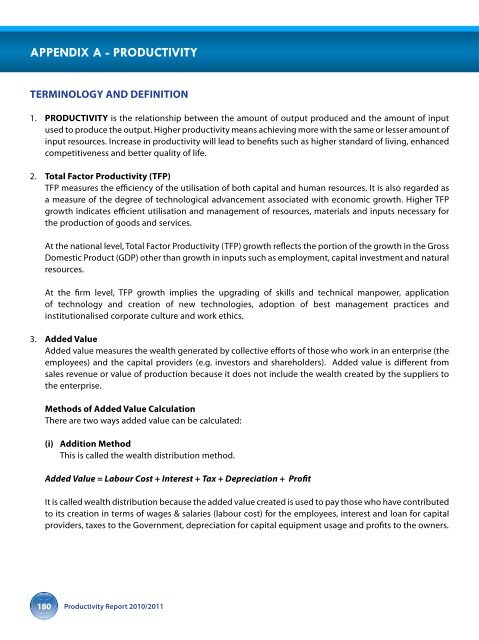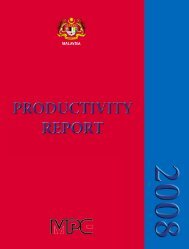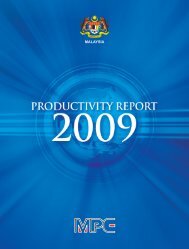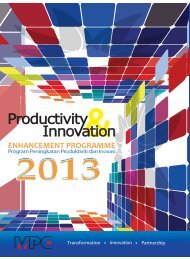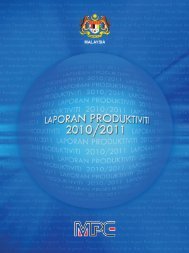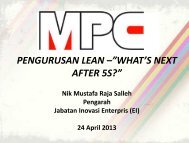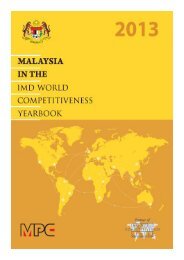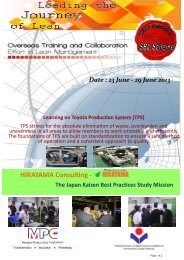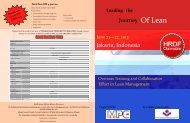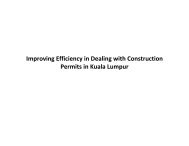Productivity Performance - MPC
Productivity Performance - MPC
Productivity Performance - MPC
Create successful ePaper yourself
Turn your PDF publications into a flip-book with our unique Google optimized e-Paper software.
APPENDIX A - PRODUCTIVITY<br />
TERMINOLOGY AND DEFINITION<br />
1. PRODUCTIVITY is the relationship between the amount of output produced and the amount of input<br />
used to produce the output. Higher productivity means achieving more with the same or lesser amount of<br />
input resources. Increase in productivity will lead to benefits such as higher standard of living, enhanced<br />
competitiveness and better quality of life.<br />
2. Total Factor <strong>Productivity</strong> (TFP)<br />
TFP measures the efficiency of the utilisation of both capital and human resources. It is also regarded as<br />
a measure of the degree of technological advancement associated with economic growth. Higher TFP<br />
growth indicates efficient utilisation and management of resources, materials and inputs necessary for<br />
the production of goods and services.<br />
At the national level, Total Factor <strong>Productivity</strong> (TFP) growth reflects the portion of the growth in the Gross<br />
Domestic Product (GDP) other than growth in inputs such as employment, capital investment and natural<br />
resources.<br />
At the firm level, TFP growth implies the upgrading of skills and technical manpower, application<br />
of technology and creation of new technologies, adoption of best management practices and<br />
institutionalised corporate culture and work ethics.<br />
3. Added Value<br />
Added value measures the wealth generated by collective efforts of those who work in an enterprise (the<br />
employees) and the capital providers (e.g. investors and shareholders). Added value is different from<br />
sales revenue or value of production because it does not include the wealth created by the suppliers to<br />
the enterprise.<br />
Methods of Added Value Calculation<br />
There are two ways added value can be calculated:<br />
(i) Addition Method<br />
This is called the wealth distribution method.<br />
Added Value = Labour Cost + Interest + Tax + Depreciation + Profit<br />
It is called wealth distribution because the added value created is used to pay those who have contributed<br />
to its creation in terms of wages & salaries (labour cost) for the employees, interest and loan for capital<br />
providers, taxes to the Government, depreciation for capital equipment usage and profits to the owners.<br />
180 <strong>Productivity</strong> Report 2010/2011


